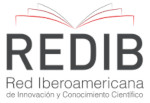Tracking knowledge
tree survey and botanics teaching on the trail in Alto Solimões
DOI:
https://doi.org/10.48017/dj.v8i3.2285Keywords:
Ecological trail, Identification key, Didactic strategies, Sustainable EducationAbstract
The main objective of this research was to carry out a qualitative and quantitative survey of the tree diversity of the ecological trail of the Institute of Nature and Culture INC / UFAM from the point of view of its pedagogical value for teaching botany. From the information obtained didactic tools were developed for teaching botany in order to investigate the potential of the trail as a pedagogical tool. The tree survey of the sampling area resulted in 41 species, 39 genera and 27 botanical families distributed among tree and palm species. From this, an illustrated guide was developed with the species found, a glossary with botanical terms and a key to identify the characteristics of the leaves and fruits. The students expressed satisfaction with the practice conducted, reflected in their massive and attentive participation in the activity in the activity of identifying the key, in which they showed that the trail has pedagogical potential in the teaching of botany.
Metrics
References
Eisenlohr, P. V., Okano, R. M. C., Vieira, M. F., Leone, F. R., Stringheta, A. C. O. (2008). Flora fanerogâmica do campus da Universidade Federal de Viçosa.Ceres, 5(4), 317-326, jul./ago. 2008.
Favoretti, V., Silva, V. V., Lima, R.A. (2020). O ensino de ecologia em espaços não-formais: percepções de alunos do ensino médio técnico no Sul do Amazonas. Revista Cocar, 14(30),v.14, n.30, 1-19, set./dez. 2020.
Heiden, G., Barbieri, R. L., Stumpf, E. R. T. (2006). Considerações sobre o uso de plantas ornamentais nativas. Revista Brasileira de Horticultura Ornamental, 12(1), 02-07, jan./jun. 2006.
Lorenzi, H. (2002). Árvores brasileiras: manual de identificação e cultivo de plantas arbóreas do Brasil. (4ª.ed.). Instituto Plantarum.
Lorenzi, H., Souza, H. M., Torres, M. A. V., Bacher, L. B. (2003). Árvores exóticas no Brasil: madeireiras, ornamentais e aromáticas. (1ª.ed.). Instituto Plantarum.
Lorenzi, H. (2008).Árvores brasileiras: manual de identificação e cultivos de plantas arbóreas nativas do Brasil. (4ª.ed.). Instituto Plantarum.
Macêdo, B. R. M., Lisboa, C. M. C. A., Carvalho, F. G.(2012). Diagnóstico e diretrizes para a arborização do campus Central da Universidade Federal do Rio Grande do Norte. Sociedade Brasileira de Arborização Urbana, 7(1), 35-51, jan./jun. 2012. Mantovani, W., Leitão-Filho, H. F ., Martins, F. R. (1985). Chave baseada em caracteres vegetativos para identificação de espécies lenhosas do cerrado da Reserva Biológica de Moji Guaçu, Estado de São Paulo. Hoehnea 12(1), 35-56, jul./dez. 1985.
Moura, O.S., Gonçalves, J.S., Lima, R.A., Gordo, J.D., Gonçalves, J.M. (2021). Herbário COOE: importância como ferramenta de estudo e conservação da biodiversidade vegetal de Rondônia. Revista Educamazônia, 13(1), 183-199, jan./jul. 2021.
Oliveira, F. A. C., Silva, L. M., Hasse, I., Cadorin, D. A., Oliveira, K. A. (2009). Inventário da arborização do campus Pato Branco da Universidade Tecnológica Federal do Paraná –UTFPR. Sociedade Brasileira de Arborização Urbana, 4(1), 93-106, jan./jul. 2009.
Oliveira, A. P. L., Correia, M. D. (2015). Ensino e Aprendizagem através do registro das aulas de campo utilizando diários de bordo. Revista Brasileira de Pesquisa em Educação em Ciências, 15(3), 537-544, 544, jul./dez. 2015.
Raven, P . H., Evert, R . F., Eichhorn, S . E. (2007). Biologia Vegetal. (5ª.ed.). Guanabara Books.
Souza, V. C., Lorenzi, H. (2012). Botânica Sistemática: guia ilustrado para identificação das famílias de fanerógamas nativas e exóticas no Brasil, baseado em APG III. (3ª.ed.). Instituto Plantarum.
Secretaria Municipal do Verde e do Meio Ambiente - SVMA. (1993). A questão ambiental urbana: Cidade de São Paulo. (1ª.ed.). SVMA.
Souza, F. G., L ima, R. A. (2019). A importância da família Arecaceae para a região norte. Revista Educamazônia, 23(2), 100-110, jul./dez. 2019.
Zanatta, M. R. V., K uhlmann, M., Cota, M. R. C., S antos, A. B. P., Proença, C. E. B. (2015). Chave interativa ilustrada para famílias de Angiospermas do bioma Cerrado. Heringeriana,10(2), 91-112, jan./jun. 2015.
Downloads
Published
How to Cite
Issue
Section
License
Copyright (c) 2023 Ana Cristina Viana Barros, Tatyanna Mariúcha de Araújo Pantoja, Renato Abreu Lima

This work is licensed under a Creative Commons Attribution 4.0 International License.
The Diversitas Journal expresses that the articles are the sole responsibility of the Authors, who are familiar with Brazilian and international legislation.
Articles are peer-reviewed and care should be taken to warn of the possible incidence of plagiarism. However, plagiarism is an indisputable action by the authors.
The violation of copyright is a crime, provided for in article 184 of the Brazilian Penal Code: “Art. 184 Violating copyright and related rights: Penalty - detention, from 3 (three) months to 1 (one) year, or fine. § 1 If the violation consists of total or partial reproduction, for the purpose of direct or indirect profit, by any means or process, of intellectual work, interpretation, performance or phonogram, without the express authorization of the author, the performer, the producer , as the case may be, or whoever represents them: Penalty - imprisonment, from 2 (two) to 4 (four) years, and a fine. ”


















